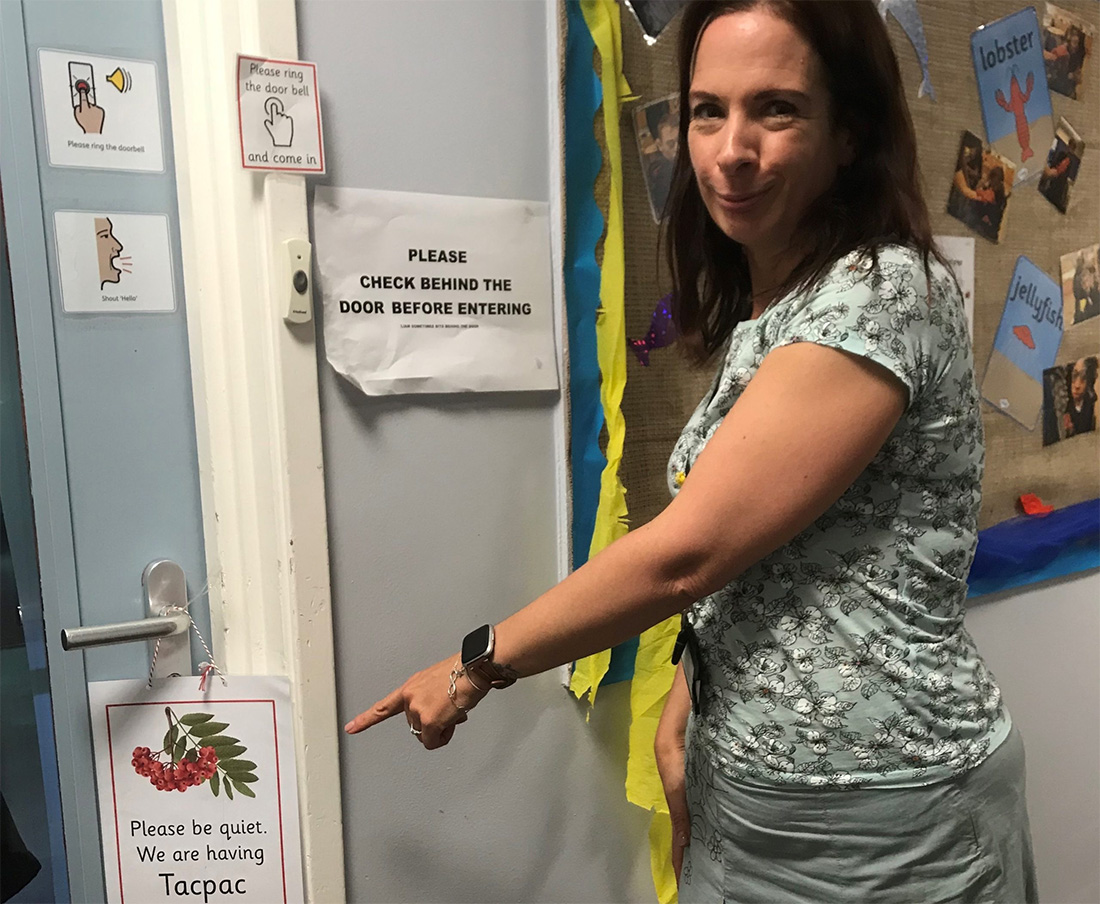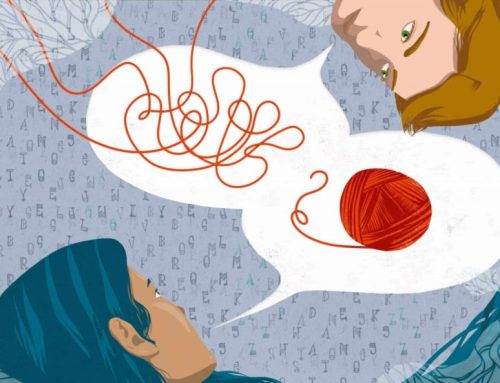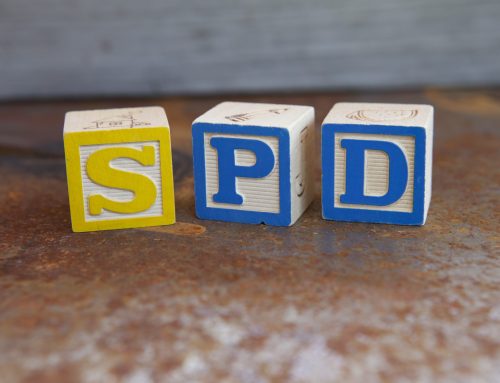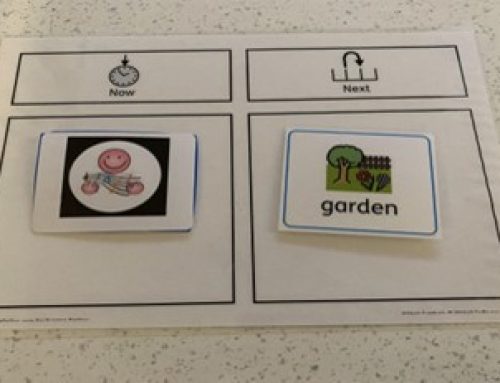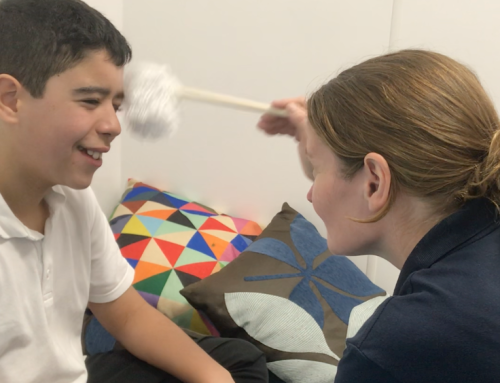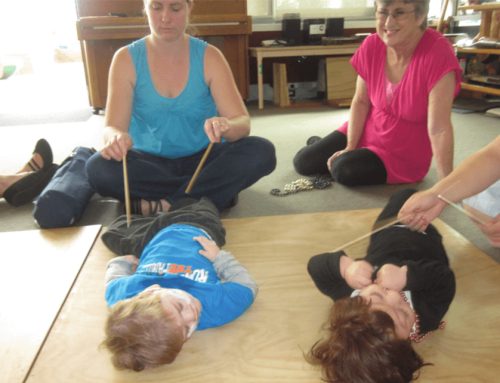“We were just getting going and someone came into our class to ask about a dinner duty rota. In taking my eyes off my receiver, I lost her attention, just when she had started looking at me, and I could not get back to that moment.”
TACPAC sessions need to be free from interruption. After all, the whole point of TACPAC is to encourage the receiver to train all their focus on only two stimuli, that is the touch of the giver and the basic beat of the music. The alignment of the sensory languages of touch and music give one clear message to the receiver, and helps them to relax and to feel safe.
If someone suddenly bursts into the room when a TACPAC session is taking place, then both the giver and the receiver will struggle to hold focus. The receiver’s attention will be split between their TACPAC session and whatever else is happening in the room, and their concentration will be broken. It’s easy to think that our receivers do not focus on the sensory messages, or listen to the music, but they do! Close observation will show you that these messages from you are important to them.
Partnership and consistency
Your focus, as a giver, is on the quality of your attention to your receiver. They need to know that you are “there” for them during this time. The power of the sensory message will be diluted during a disruption and make your task as the giver, more difficult to bring your receiver’s attention back to task once other distractions are taking place.
Moreover, the partnership between giver and receiver is largely based on the unspoken promise that what happens in the TACPAC session will be safe and predictable. Part of that predictability is established through having a consistent setting each time, both in terms of location and atmosphere. Unexpected interruptions can undermine that consistency, and therefore undermine the receiver’s sense of safety and their trust.
Keep your TACPAC space a safe space with a “Do not disturb” sign
It is fundamental to hold your TACPAC sessions in a space that is unlikely to experience sudden loud noise, or people coming and going. It might take some time for this message to filter across your setting. It takes a whole staff to support this little sign, making everyone aware that they need to respect the boundaries of your TACPAC space. One easy way to do this is by making a “do not disturb” sign.
A simple sign that says “Do Not Disturb – TACPAC Time” is easy to make, and lets everyone else know that when the sign is on display, they need to move quietly outside the space, and not to come in. It tells people what they need to do, and why. With practise, other staff will become aware of the need for an uninterrupted TACPAC session, and hopefully this will become part of the culture of your setting, and colleagues will come to respect TACPAC Time. We are here to help you embed this value into your wider staff. Everyone needs to help!
Before each TACPAC session, put your “do not disturb” sign on the door.
Make your own!
You can make your own TACPAC Do Not Disturb sign or simply download and print ours, available at: https://TACPAC.co.uk/wp-content/uploads/2021/09/Do-Not-Disturb.pdf.
Find out more!
If you want to learn more about great ways of using TACPAC with your receivers, and the importance of the basic beat, sign up to one of our online training sessions: https://TACPAC.co.uk/TACPAC-online-training/
Share your story
Do you have experience of using a Do Not Disturb sign when you are working with TACPAC? How does it work for you? How have you requested others to take note of this sign?
Don’t forget to share your experiences and best practice with the TACPAC community forum or https://tacpac.co.uk/forums/forum/tacpac-community/ or you can Email us to share your stories, photos and videos: info@tacpac.co.uk


